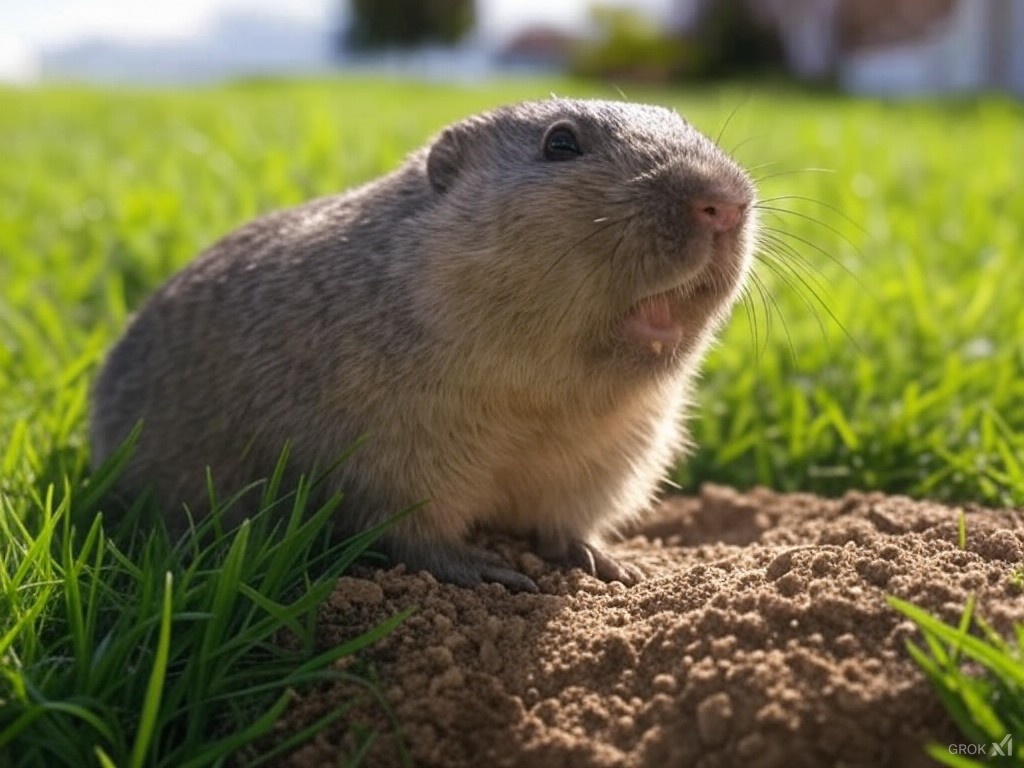Gophers, particularly pocket gophers, can cause considerable damage to lawns due to their burrowing and feeding habits. Gopher trapping is done with lethal traps and continues until no new damage occurs.

Here’s an overview of the types of damage they can inflict:
Lawn Damage:
- Burrowing:
- Tunnels: Gophers create an extensive network of tunnels both below and above the ground. Surface tunnels appear as long, narrow ridges of soil, disrupting the lawn’s appearance and making mowing difficult.
- Mounds: They push soil out of their burrows, creating fan-shaped mounds (or “gopher hills”) on the surface, which can be numerous and close together, leading to an uneven lawn surface.
- Root Damage:
- Feeding: Gophers feed on plant roots, including grass, which can kill patches of lawn or stunt plant growth. They’re especially fond of the roots of grasses, vegetables, and ornamental plants.
- Disruption: Even without eating the roots, their tunnels can disturb root systems, leading to poor plant health.
Additional Damages:
- Soil Structure Alteration:
- The constant digging can lead to soil compaction in some areas and loosening in others, affecting water drainage and potentially leading to erosion, especially on slopes.
- Garden and Landscaping:
- Vegetable Gardens: Gophers can decimate vegetable gardens by eating roots, tubers, and other underground parts of plants.
- Shrubs and Trees: Young trees or shrubs can be girdled or uprooted as gophers gnaw on or dig around their roots.
- Irrigation Systems:
- Gopher tunnels can damage underground irrigation lines or alter water flow, leading to inefficiencies or system failures.
Indirect Effects:
- Aesthetic Damage: The visual impact of a lawn with numerous mounds and ridges can be significant, reducing property appeal.
- Weed Proliferation: Disturbed soil can promote weed growth as seeds get more access to light and nutrients.
- Pest Attraction: The disturbed areas might attract other pests, like moles or voles, that use the tunnels or are attracted to the same food sources.
Mitigation:
- Trapping: Lethal trapping is very effective but requires locating active tunnels.
- Repellents: Castor oil-based repellents can deter gophers from certain areas, though with varying success.
- Barriers: Deep mesh barriers around garden areas or under valuable plants can prevent gopher intrusion, though this is more practical for smaller areas.
- Habitat Modification: Reducing available food sources by controlling weeds or planting less attractive vegetation might help.
- Gassing: Fumigants can be used in tunnels, but they need to be applied correctly and are generally less humane.
- Professional Pest Control: In severe cases, professional services might be necessary for effective gopher management.
Gophers can significantly alter the landscape of a yard, turning a once lush lawn into a patchwork of tunnels and mounds. Managing their population requires persistence and sometimes a combination of methods to achieve control.
